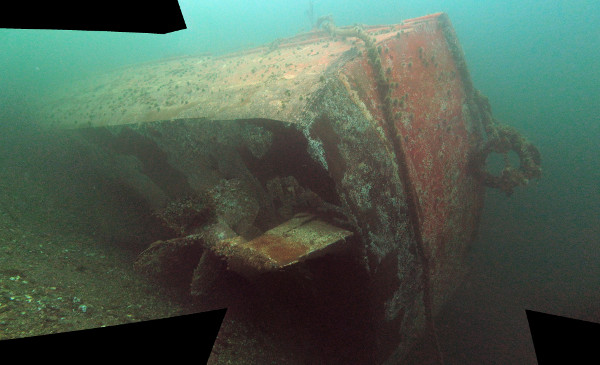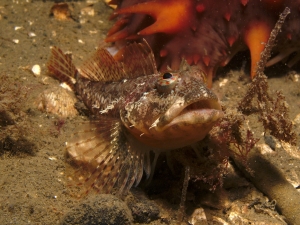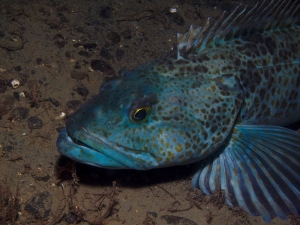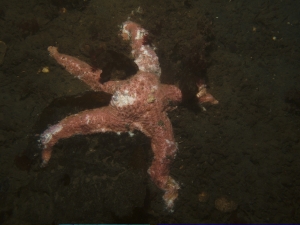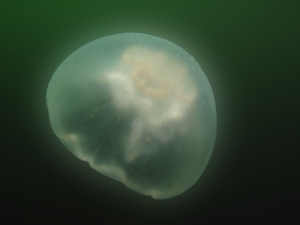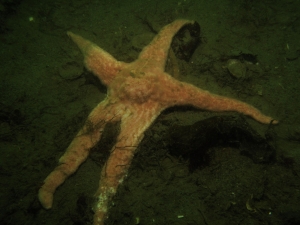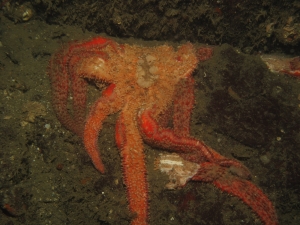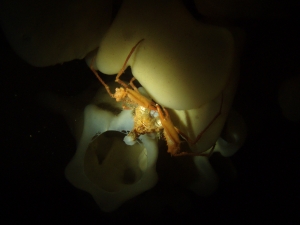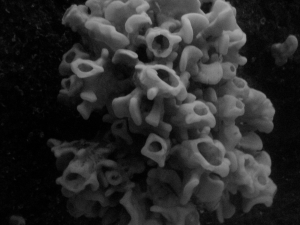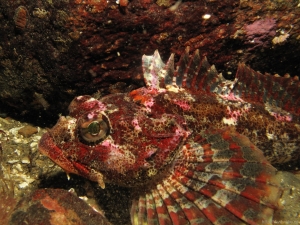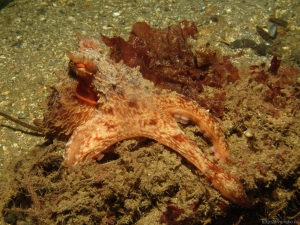
Juvenile Giant Pacific Octopus and Friend
30-Nov-13: I’m part way through re-editing some of these photos to improve the colours and contrast.
Every time I step away from diving for a while, I need the first part of a dive to shake out both my dive skills, as well as my photography skills. So, after having spent a month out of the water due to a busy work scheduled (which seemed much longer than a month!), I was excited to get back into the water and getting back into the groove. As luck would have it, the first warm-up photos I took were of an Octopus, out in the middle of the bay at Whytecliff!
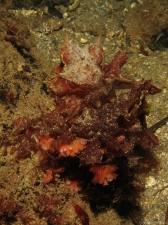
Having had enough of my shenanigans, the Octopus is trying to blend in with some seaweed.
This little guy was definitely a treat to see as we were starting our dive. I initially thought (and posted) that it was a Red Octopus, but due to the lack of distinct papillae, it may acrually have been a juvenile Giant Pacific Octopus — I’m not entirely sure. With a bit of excessive finning and fiddling with camera settings (Definitely wasn’t in the zone at the start of the dive at that point), I managed to snap some photos. In retrospect, I have a list of different settings I would have liked to tried, but the photos turned out well regardless.
The cool thing about this little guy was how he was changing his colour and texture to blend in with the background a bit better. As I snapped a batch of photos, it started to wrap itself in seaweed to hide better, and we decided to leave him/her alone and carry on with our dive.
The rest of the dive was fun, but eventually I found myself drawn back to the Octo. We got back up to the depth where we hit the wall face, and just before swimming back out into the bay to see if the Octopus was still there, my arm got cold. And wet. Very fast. Catastrophic suit failure! I thumbed the dive, signaling an ascent up the slope and we proceeded into the bay for a nice slow end to the dive. Luckily only my arm got wet, but it was saturated. I haven’t found the leak yet, it was definitely in from the dry-glove ring, as my hand stayed dry.
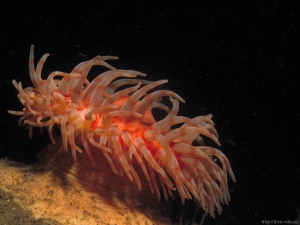
A Swimming Anemone, conveniently NOT swimming.
As a side note, I’ve been playing with Darktable again for editing photos. I’m running it on my Linux laptop, which has a really, really nice display. I’m finding photos don’t look quite as nice on other displays, sometimes the colours are rather dull. I have to dial it in to get my post-processing right, something to work on.
I now have to find my drysuit leak before diving again, hopefully it’ll be an easy find and fix. I’ve got a patch kit and spare seals so I’m fairly confident I’ll be back in the water soon. While I think about it, I need to rebuild one of my second stages as well.. It never ends!
Starfish Die-Off Update
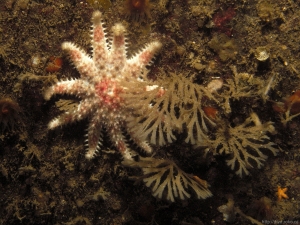
A healthy looking starfish
It was a bit eerie not seeing the usual wall of starfish due to the die-off, however I did see some healthy starfish sporadically through the dive, as evidenced in the photos below. Only one starfish in late-stage disintegration, which was unidentifiable. Hopefully the population will recover from this, one of the theories is that it’s a Malthusian check on the over-population of the starfish in the past few years.
More photos in the full article:
View full article »

